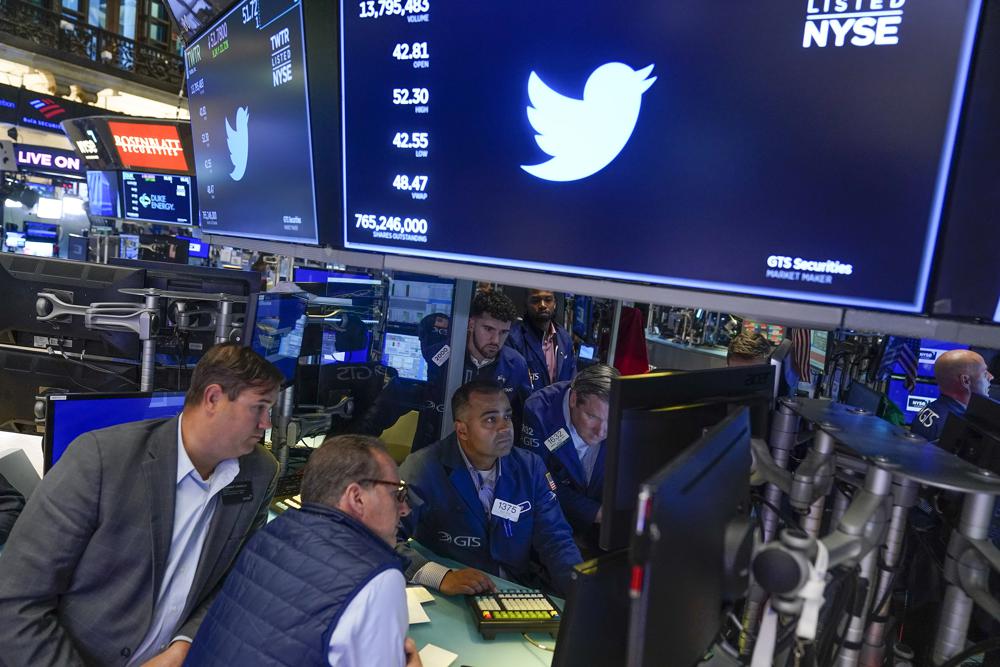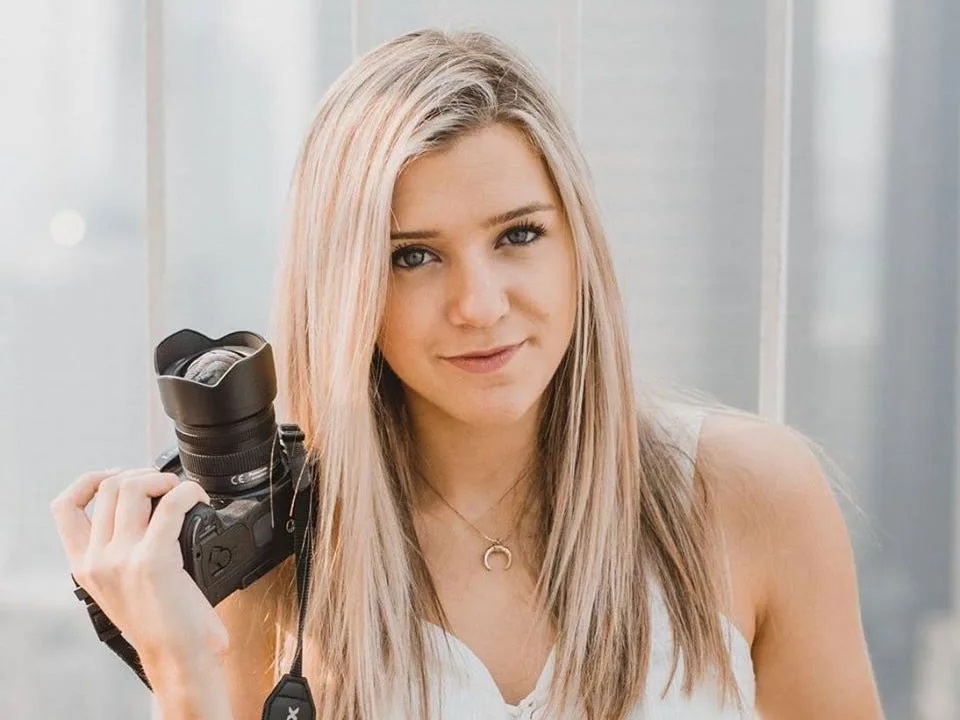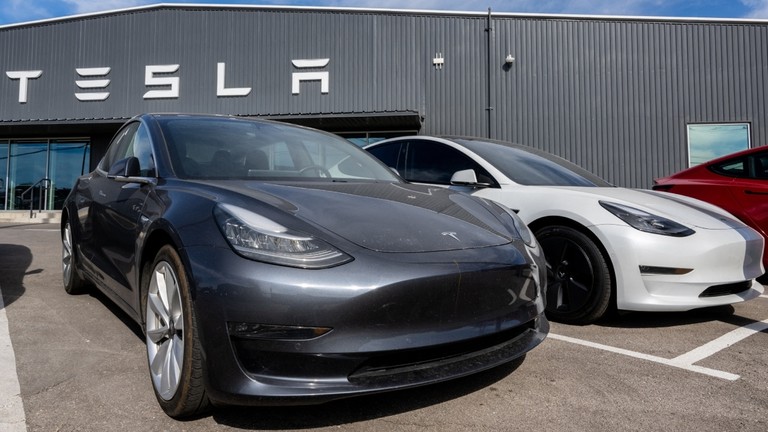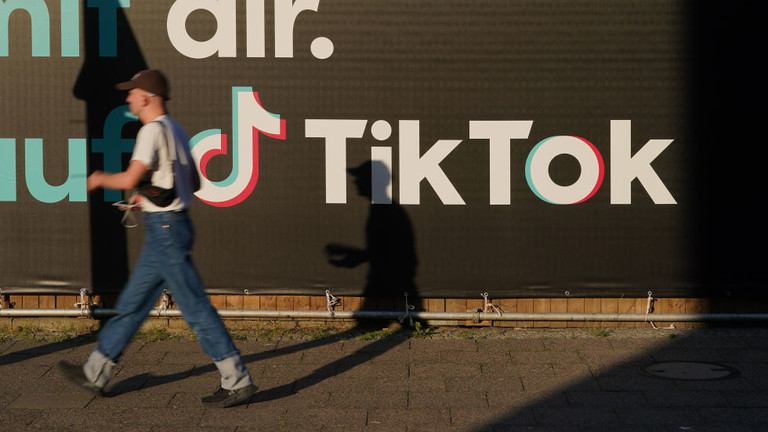SAN FRANCISCO (AP) — A super app called X? A bot-free free speech haven? These are some of Elon Musk’s mysterious plans for Twitter, now that he may be buying the company after all.
After months of squabbling over the fate of their bombshell $44 billion deal, the billionaire and the bird app are essentially back to square one — if a bit worse for wear as trust and goodwill has seemed to erode on both sides.
Musk, the CEO of Tesla Motors and SpaceX and Twitter’s most high-profile user since former President Donald Trump was booted from it, has shared few concrete details about his plans for the social media platform. While he’s touted free speech and derided spam bots since agreeing to buy the company in April, what he actually wants to do about either is shrouded in mystery.
He could own one of the world’s most powerful communications platforms with 237 million daily users in a matter of weeks, though the deal is not final. The lack of clear plans for the platform are raising concern among Twitter’s constituencies, ranging from users in conflict regions where it offers an information lifeline to the company’s own employees.
“Both users and advertisers are — understandably — anxious about whether the move will fundamentally change the culture of the platform,” said Brooke Erin Duffy, a professor at Cornell University who studies social media. “And so, Musk will need to decide whether he wants to quash their concerns by retaining core features (the content moderation system, for instance) and keeping the company public — or whether he will undertake a full-scale overhaul.”
Muddling things further, on Tuesday Musk tweeted that “Buying Twitter is an accelerant to creating X, the everything app,” without further explanation.
Although Musk’s tweets and statements have been cryptic, technology analysts have speculated that Musk wants to re-create a version of China’s WeChat app that can do video chats, messaging, streaming, scan bar codes and make payments.
He gave a little more detail during Tesla’s annual shareholder meeting in August, telling the crowd at a factory near Austin, Texas, that he uses Twitter frequently and knows the product well. “I think I’ve got a good sense of where to point the engineering team with Twitter to make it radically better,” he said.
Tesla CEO says he’ll pay $44B to buy Twitter
The tumultuous saga of Elon Musk’s on-again off-again purchase of Twitter took a turn toward a conclusion Tuesday after the mercurial Tesla CEO proposed to buy the company at the originally agreed-on price of $44 billion. (Oct. 4)
0 seconds of 1 minute, 49 secondsVolume 90%
Handling payments for goods could be a key part of the app. Musk said he has a “grander vision” for what X.com, an online bank he started early in his career that eventually became part of PayPal, could have been.
“Obviously that could be started from scratch, but I think Twitter would help accelerate that by three-to-five years,” Musk said at the August meeting. “So it’s kind of something that I thought would be quite useful for a long time. I know what to do.”
For now, Twitter has immediate and pressing problems Musk will need to deal with if he takes ownership of the company. Its social media rivals are struggling with declining stock prices and some, like Snap, even announced layoffs. Government regulation and attracting younger users away from TikTok are also challenges. And Musk’s vision of a free speech haven has social media and content moderation experts, as well as digital and human rights advocates, concerned.
“When this all started in the spring, we had indicators and a strong sense of what Musk might do with the platform,” said Angelo Carusone of Media Matters, a watchdog group that opposes the takeover. “Because of the lawsuit, we know who he’s been talking to, what he’s been saying and the types of far-right ideological decision makers he wants to put in place. To put it bluntly, the worst fears have been confirmed.”
Twitter employees, under former CEO Jack Dorsey and his predecessors, have spent years working to tame the platform once called the “free-speech wing of the free-speech party” where hate and harassment abound into something where all are welcome and safe. While it’s far from perfect, critics worry Musk’s ownership will mean turning back the clock on years of this work.
“Musk made it clear that he would roll back Twitter’s community standards and safety guidelines, reinstate Donald Trump along with scores of other accounts suspended for violence and abuse, and open the floodgates of disinformation,” Carusone said.
The company, for instance, was an early adopter of the “report abuse” button in 2013, after U.K. member of parliament Stella Creasy received a barrage of rape and death threats on the platform, echoing the experiences of other women over the years.
In subsequent years, Twitter continued to craft rules and invest in staff and technology to detect violent threats, harassment and misinformation that violates its policies. After evidence emerged that Russia used their platforms to try to interfere with the 2016 U.S. presidential election, social media companies also stepped up their efforts against political misinformation.
The big question now is how far Musk, who describes himself as a “free-speech absolutist,” wants to ratchet back these systems — and whether users and advertisers will stick around if he does.
Aiming to tamp down such worries, Musk said in May he wants Twitter to be “as broadly inclusive as possible ” where ideally, most of America is on it and talking — a far cry from the far-right playground his critics are warning against.
And while Musk has hinted he’d consider reinstating Trump’s account, it’s not clear the former president, who has since launched his own social media platform, would return.
Then there’s the matter of Twitter’s employees, who’ve been living with uncertainty, high- (and low-) profile departures and a potential owner who’s publicly derided them on their own platform. Musk has also targeted Twitter’s work-from home policy, having once called for the company’s headquarters to be turned into a “homeless shelter” because, he said, so few employees actually worked there.
As a hyper-frequent Twitter user with over 100 million followers, Musk does know how to use the platform. During an all-hands staff meeting Musk attended in June, he said his goal was to make it “so compelling that you can’t live without it.” If he’s able to realize this, it could finally put Twitter in the big leagues of social media, with TikTok and Meta’s Facebook and Instagram, where users are counted in the billions, not mere millions.
Of course, Musk is also well known for predictions that are delayed or may not come true, such as colonizing Mars or deploying a fleet of autonomous robotaxis.
“This is not a car manufacturer where, good enough, all you have to do is beat General Motors. Sorry, that isn’t really that hard,” said David Kirsch, a professor of strategy and entrepreneurship at the University of Maryland who’s studied Twitter bots’ effect on Tesla’s stock price. “You are dealing here with all of these other companies (that) also have very sophisticated AI programs, very sophisticated PhD programmers…everyone is trying to crack this nut.”


 NEWS5 months ago
NEWS5 months ago
 NEWS5 months ago
NEWS5 months ago
 NEWS5 months ago
NEWS5 months ago
 WAR5 months ago
WAR5 months ago
 FINANCE5 months ago
FINANCE5 months ago
 INVESTMENTS5 months ago
INVESTMENTS5 months ago
 FINANCE5 months ago
FINANCE5 months ago





















